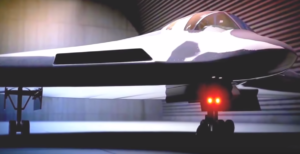 Michael Kofman, a Russian military affairs specialist at the Center for Naval Analyses, said that Russia’s next generation PAK-DA stealth bomber program is more or less still in the research and development phase. The National Interest adds that the Kazan Aviation Plant (KAZ) in charge of building the prototype has a shortage of highly skilled specialists, and may not be up for the task.
Michael Kofman, a Russian military affairs specialist at the Center for Naval Analyses, said that Russia’s next generation PAK-DA stealth bomber program is more or less still in the research and development phase. The National Interest adds that the Kazan Aviation Plant (KAZ) in charge of building the prototype has a shortage of highly skilled specialists, and may not be up for the task.
Russia is gearing up for the eventual start of production for the PAK-DA stealth bomber even though the aircraft will not be ready for many years to come. One of the many challenges for the Russians to overcome is the shortage of trained and experienced personnel to build such a complex aircraft.
“The enterprise is working on the design and organization of the production of a prospective long-range aviation complex,” Nikolai Savitskih, the director general of the Kazan Aviation Plant (KAZ) told the Russian language TASS news service. “KAZ was identified as the parent manufacturer, will ensure the production load for the next decade.”
Right now, Tupolev is working under a contract to develop and build a prototype for the new bomber. However, the Kazan factory—which will also build the Tupolev Tu-160M2 Blackjack—will need more trained workers. “One of the problematic issues for the company is the shortage of highly skilled specialists such as mechanics, engineers, designers, workers, etc.,” Savitskih said. “In 2017, we worked out and prepared a comprehensive target program for training and retaining personnel under the programs of the prospective aviation long-range aviation complex (PAK-DA), Tu-160 to the amount of more than 2.6 billion rubles by 2025. To date, this program is being approved by the government of the Russian Federation.” […]
[…] The key to success for the program depends on Russia’s ability to develop an appropriate powerplant for the new bomber and its ability to build the stealthy surfaces needed for such a machine. If Russia can find the money to pull off the development program, then there is a real possibility of starting PAK-DA production late in the next decade.
Read more here.



